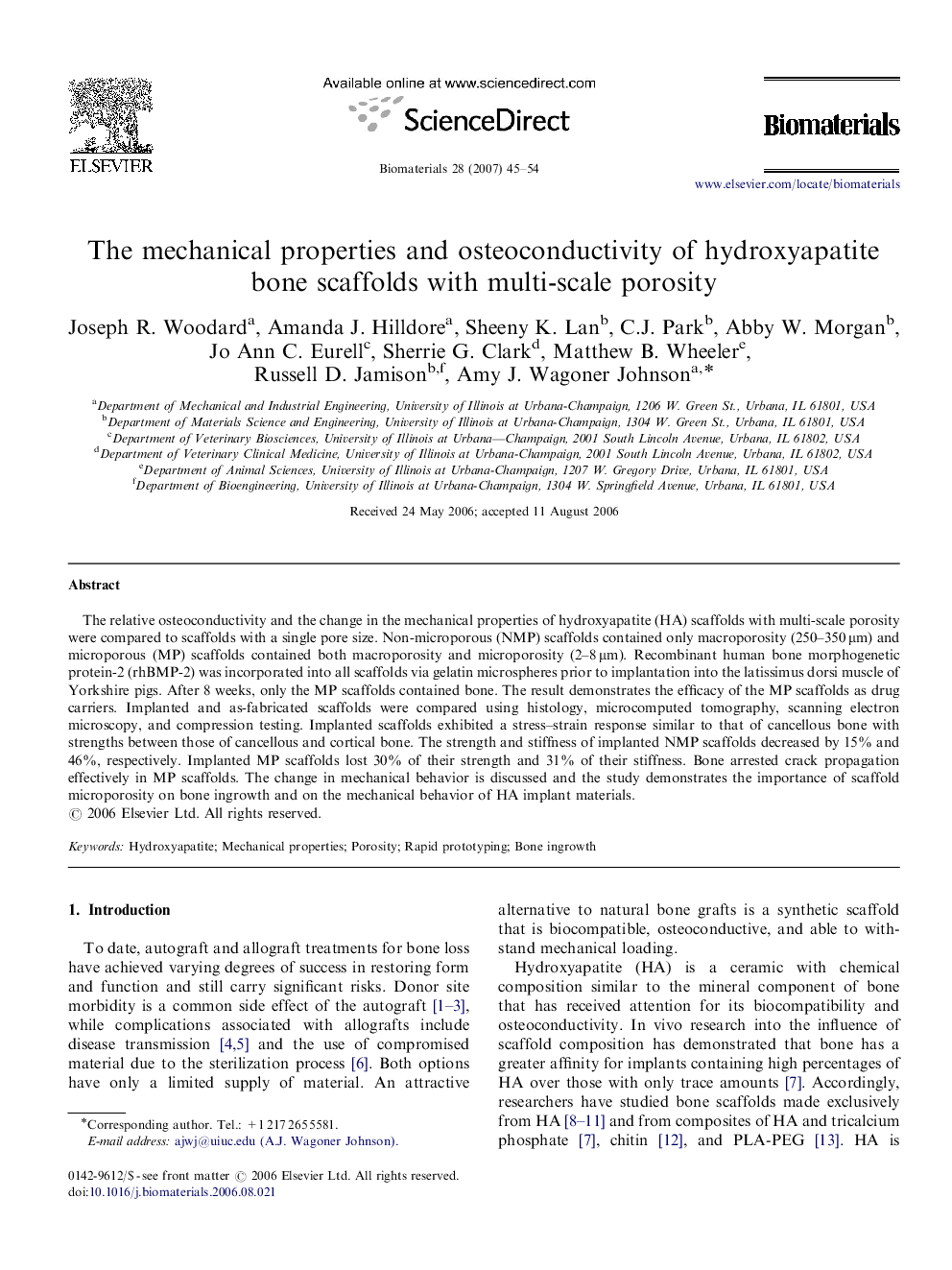| Article ID | Journal | Published Year | Pages | File Type |
|---|---|---|---|---|
| 11129 | Biomaterials | 2007 | 10 Pages |
The relative osteoconductivity and the change in the mechanical properties of hydroxyapatite (HA) scaffolds with multi-scale porosity were compared to scaffolds with a single pore size. Non-microporous (NMP) scaffolds contained only macroporosity (250–350 μm) and microporous (MP) scaffolds contained both macroporosity and microporosity (2–8 μm). Recombinant human bone morphogenetic protein-2 (rhBMP-2) was incorporated into all scaffolds via gelatin microspheres prior to implantation into the latissimus dorsi muscle of Yorkshire pigs. After 8 weeks, only the MP scaffolds contained bone. The result demonstrates the efficacy of the MP scaffolds as drug carriers. Implanted and as-fabricated scaffolds were compared using histology, microcomputed tomography, scanning electron microscopy, and compression testing. Implanted scaffolds exhibited a stress–strain response similar to that of cancellous bone with strengths between those of cancellous and cortical bone. The strength and stiffness of implanted NMP scaffolds decreased by 15% and 46%, respectively. Implanted MP scaffolds lost 30% of their strength and 31% of their stiffness. Bone arrested crack propagation effectively in MP scaffolds. The change in mechanical behavior is discussed and the study demonstrates the importance of scaffold microporosity on bone ingrowth and on the mechanical behavior of HA implant materials.
